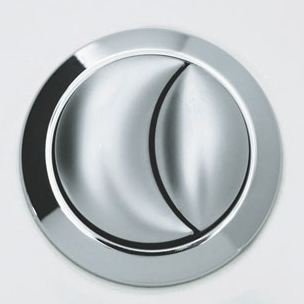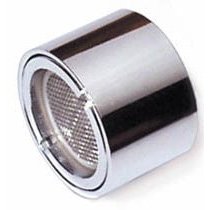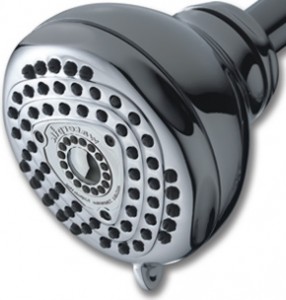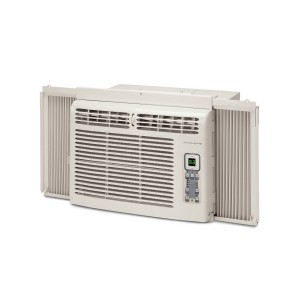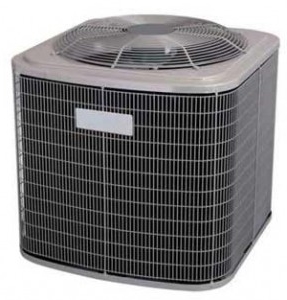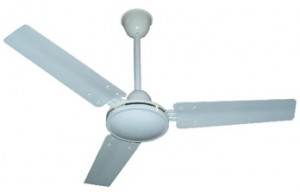25%-30% of the water used in each household is from the flushing of the toilet, and the average toilet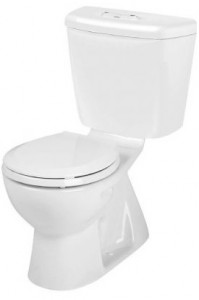 uses 3.5 gallons of water per flush. With the objective of saving water, a number of companies have designed and marketed dual flush toilets. These toilets provide two flush options of different sized portions, thus enabling the user to decide which amount is necessary to clear the bowl. The half flush option as the name suggests saves water by not releasing a full flush. Utilizing a dual flush toilet can cut back on total water usage by 10-15% depending on the maximum capacity of the unit amounting on average to water savings of nearly 12,000 gallons per year. Conversion kits are available that provide the two flushing options for your existing toilet, this is also a great way to recycle the fitting that you already possess. A new dual flush toilet will cost from $200-$350 and conversion kits for existing toilets will cost around $50
uses 3.5 gallons of water per flush. With the objective of saving water, a number of companies have designed and marketed dual flush toilets. These toilets provide two flush options of different sized portions, thus enabling the user to decide which amount is necessary to clear the bowl. The half flush option as the name suggests saves water by not releasing a full flush. Utilizing a dual flush toilet can cut back on total water usage by 10-15% depending on the maximum capacity of the unit amounting on average to water savings of nearly 12,000 gallons per year. Conversion kits are available that provide the two flushing options for your existing toilet, this is also a great way to recycle the fitting that you already possess. A new dual flush toilet will cost from $200-$350 and conversion kits for existing toilets will cost around $50
Category: ‘Efficient Fittings’
Dual Flush Toilet
Hot Water Circulators
Have you ever thought about the amount of water wasted when you turn on a tap and wait for the water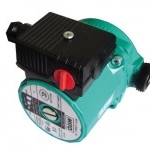 coming out to be hot? This happens due to the stagnant water in the pipeline loosing heat from conduction and becoming cold. The amount of water lost by waiting for the flow to come through the pipeline can be numerous gallons. By installing a hot water circulator you can eliminate this waste of water by having hot water available at your demand.
coming out to be hot? This happens due to the stagnant water in the pipeline loosing heat from conduction and becoming cold. The amount of water lost by waiting for the flow to come through the pipeline can be numerous gallons. By installing a hot water circulator you can eliminate this waste of water by having hot water available at your demand.
Hot water circulator’s run the water through your pipeline to keep hot water available at all times, they run on very low wattage so they are cheap to run (as little as a few cents per day), and are very easy/quick to install. They also frequently are available with 24 hour programmable timers so they only operate at hours when you potentially need them to further cutting down on the energy cost. In general, hot water circulators cost between $100-$400, and save the average household 16,000 gallons of water per year which means they generally pay themselves off within the year.
Shower & Faucet Aerators
The average American uses between 40 – 80 Gallons of water each day and over half of that is with running
 water from the Faucet and Shower. Standard faucet aerators will allow flow rates of 2.5 – 5 gallons of water per minute and bathroom low-flow aerators attachments deliver 0.5 to 1 gallon of water per minute whilst emitting a similar force of spray with an even spray pattern. These same figures are applicable to the shower head fixtures
water from the Faucet and Shower. Standard faucet aerators will allow flow rates of 2.5 – 5 gallons of water per minute and bathroom low-flow aerators attachments deliver 0.5 to 1 gallon of water per minute whilst emitting a similar force of spray with an even spray pattern. These same figures are applicable to the shower head fixtures
They can take anywhere from 1 to 20mins to install and cost from $1-$30 making it one of the easiest and cheapest things to do to manage your water usage at home.
Ceiling Fans
Air circulation in the house is crucial for the keeping an odor free environment and moving out any pollutants that can accumulate in the house from stagnant air. Whilst Air conditioning units can mechanically drive this airflow, the energy used to run these systems is by far the greatest of any device in the average household (See below).
10 – 100 Watts: Ceiling Fan (no Lights)
600-1500 Watts: Electric Space Heaters
600-3000 Watts: Room Air Conditioners
2000-5000 Watts: Central Air Conditioning Units
The instalation and use of a ceiling fan can greatly reduce the reliance on the AC system by circulating the air within the house, hereby creating a wind chill effect effectively cooling the people in the room whilst not actually cooling the room.
Operating the fan in reverse in the Winter produces a gentle updraft which circulates the warm air that has risen to the top of the room downward and thus stabilizes the air column, this in turn should allow for you to adjust your thermostat settings to a lower temperature. Much like lighting a room that is unoccupied, it doesn’t make much sense to have a fan on in a room with nobody in it.
